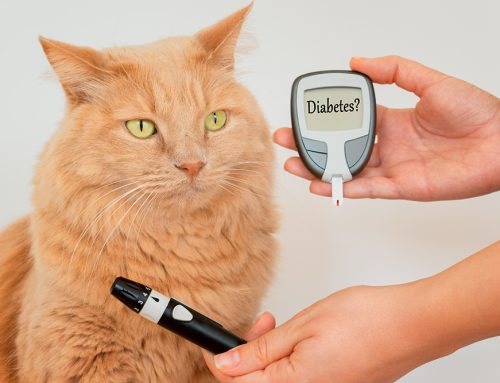You know your pet’s movements better than anyone, so when they start walking differently—slower steps, a slight hobble, or skipping a stride—it stands out. Limping is one of those symptoms that catches your attention quickly, and for good reason.
At Star of Texas Veterinary Hospital, we take it seriously too. While some causes of limping are minor and resolve with rest, others need prompt veterinary care to prevent things from getting worse. Because limping isn’t a diagnosis—it’s a clue—and the sooner we figure out what’s behind it, the sooner we can help your pet feel better.
What Is Limping?
Limping occurs when a pet alters their normal gait due to pain, weakness, or dysfunction in one or more limbs. It may appear as:
- Refusing to bear weight on a leg
- Stiff or uneven walking
- Hesitating to jump, climb stairs, or run
- Intermittent or progressive lameness
Limping can be mild and temporary—or a warning sign of a more serious injury or illness. Understanding the context and accompanying symptoms can help determine next steps.
Common Causes of Limping in Pets
Limping has many possible causes, ranging from minor to serious. Here are some of the most common:
1. Injury or Trauma
Falls, collisions, or overexertion can result in:
- Sprains or strains
- Fractures
- Ligament injuries
Explore more on broken bones in dogs and muscle tears in dogs.
2. Orthopedic and Joint Issues
Some conditions develop gradually:
- Arthritis: Common in senior pets, causing chronic joint inflammation.
- Hip Dysplasia: A malformation of the hip joint often seen in large breeds.
- Patellar Luxation: Dislocation of the kneecap, especially in small dogs.
Learn more about arthritis in cats, hip dysplasia treatment options, and patellar luxation in dogs.
3. Foreign Bodies or Wounds
Items like splinters, thorns, or foxtails can become embedded in paws or between toes, leading to sudden limping.
4. Infection or Inflammation
Joint or bone infections, abscesses, or inflammatory conditions can cause localized swelling, pain, and heat.
5. Tick-Borne Diseases
Diseases like Lyme disease may cause shifting leg lameness, fever, and lethargy. See Lyme disease in dogs for more information.
Limping Red Flags: When to Call the Vet Immediately
Some symptoms alongside limping may indicate a medical emergency:
- Non-weight-bearing lameness
- Sudden inability to stand or walk
- Obvious fracture or dislocation
- Swelling, bruising, or open wounds
- Crying out in pain or aggression when touched
- Fever, vomiting, or lethargy
- Signs of neurological involvement, like dragging limbs or loss of coordination
If you notice any of these signs, contact us promptly.
What to Expect During a Veterinary Visit
At Star of Texas Veterinary Hospital, we take a thorough, compassionate approach to assessing lameness.
Initial Exam
We’ll review your pet’s medical history and perform a physical exam, palpating joints, checking for pain or instability, and evaluating gait.
Diagnostic Tools
Depending on the case, we may recommend:
- X-rays or Ultrasound: To evaluate bones and soft tissues
- Advanced Imaging: A CT scan or MRI for internal injuries or neurological issues
- Laboratory Testing: To rule out infection, immune-mediated disease, or tick-borne illnesses
Treatment Options for Limping Pets
Once a diagnosis is made, we create a customized care plan. Treatment may include:
- Medications: Pain relievers, anti-inflammatories, or antibiotics
- Surgery: For fractures, ligament tears, or luxations
Learn more about canine cruciate ligament injuries
- Physical Rehabilitation: To build strength and support healing
- Supportive Devices: Braces, splints, or orthotics as needed
Long-Term Risks if Left Untreated
Delaying veterinary care can worsen pain and lead to:
- Chronic joint degeneration
- Permanent mobility issues
- Compensatory injuries in other limbs
- Reduced quality of life or, in severe cases, the need for amputation
How Limping Affects Your Pet’s Daily Life
Pets with limited mobility may struggle with:
- Climbing stairs or getting into vehicles
- Playing, walking, or using the litter box
- Behavioral changes due to chronic pain
These changes often cause stress for both the pet and their human family. That’s why early intervention and home support are so important.
Supporting Your Limping Pet at Home
While your veterinarian provides medical care, you can make life easier at home with:
- Environmental Adjustments: Use ramps, nonslip flooring, and orthopedic bedding
- Moderate, Low-Impact Exercise: Prevent stiffness while avoiding overexertion – Read about warm-ups and cooldowns for dogs
- Weight Management: Reducing extra pounds can ease pressure on joints
Preparing for Your Veterinary Visit
To help us evaluate your pet quickly and thoroughly, please bring:
- Medical history or previous records
- A short video of your pet walking at home
- A list of symptoms and how long they’ve been present
- Your questions or concerns—we’re here to answer them all
FAQs: Limping in Pets
Can limping go away on its own?
Sometimes mild sprains improve with rest. However, persistent or worsening limping requires medical evaluation.
Are certain breeds more prone to joint issues?
Yes. Large breeds like Labradors and German Shepherds are at higher risk for hip and elbow dysplasia. Small breeds may suffer from luxating patellas.
Is limping always a sign of a serious problem?
Not always—but it’s always a signal that something needs attention. Never ignore a limp, especially if it persists or worsens.
Compassionate Care Starts Here
Your pet’s comfort and health are our top priorities. At Star of Texas Veterinary Hospital, we’re proud to offer expert diagnostics, compassionate care, and clear communication every step of the way.
Our experienced team of veterinarians is here to support your pet’s healing—and your peace of mind.







